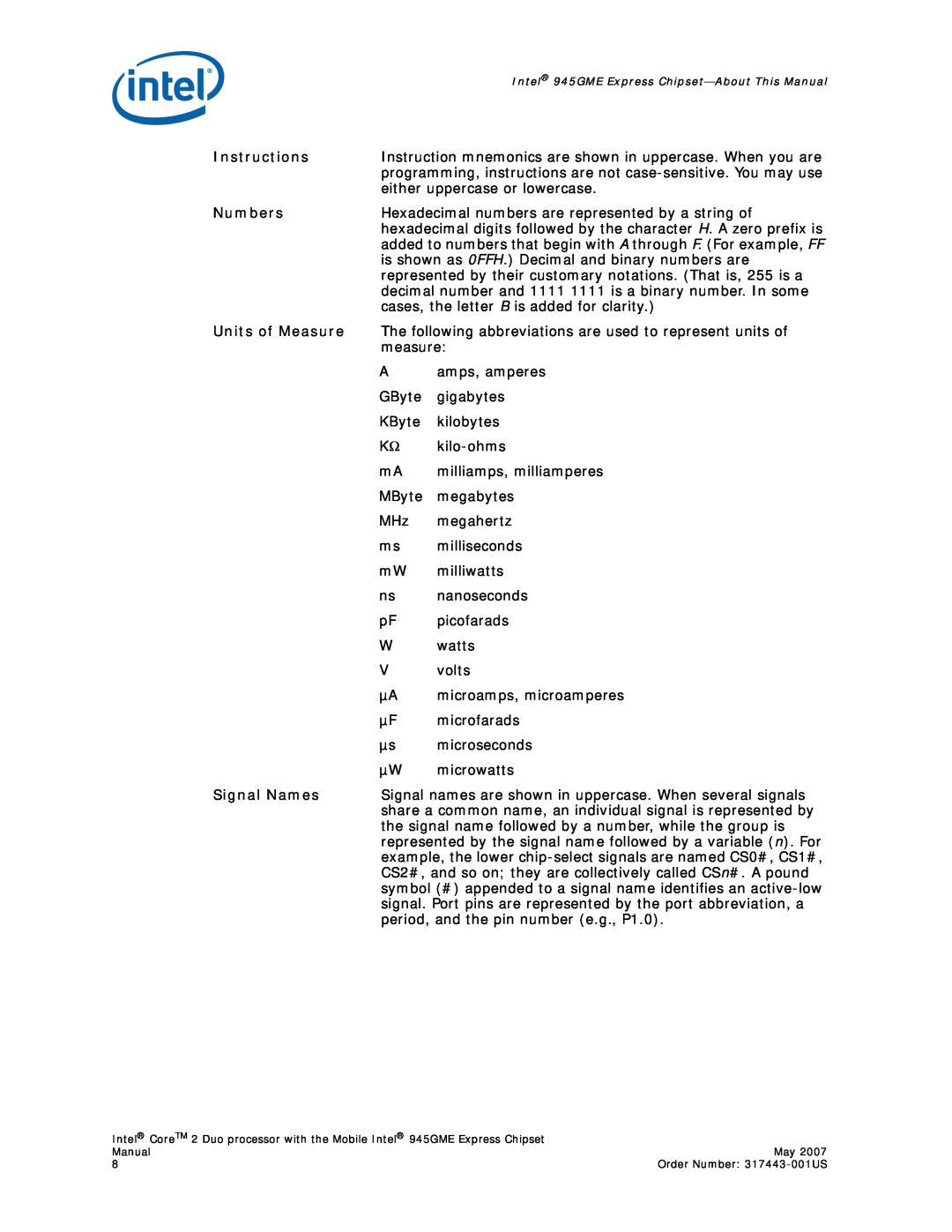
Intel® 945GME Express
Instructions | Instruction mnemonics are shown in uppercase. When you are | |
| programming, instructions are not | |
| either uppercase or lowercase. | |
Numbers | Hexadecimal numbers are represented by a string of | |
| hexadecimal digits followed by the character H. A zero prefix is | |
| added to numbers that begin with A through F. (For example, FF | |
| is shown as 0FFH.) Decimal and binary numbers are | |
| represented by their customary notations. (That is, 255 is a | |
| decimal number and 1111 1111 is a binary number. In some | |
| cases, the letter B is added for clarity.) | |
Units of Measure | The following abbreviations are used to represent units of | |
| measure: | |
| A | amps, amperes |
| GByte | gigabytes |
| KByte | kilobytes |
| KΩ | |
| mA | milliamps, milliamperes |
| MByte | megabytes |
| MHz | megahertz |
| ms | milliseconds |
| mW | milliwatts |
| ns | nanoseconds |
| pF | picofarads |
| W | watts |
| V | volts |
| µA | microamps, microamperes |
| µF | microfarads |
| µs | microseconds |
| µW | microwatts |
Signal Names | Signal names are shown in uppercase. When several signals | |
| share a common name, an individual signal is represented by | |
the signal name followed by a number, while the group is represented by the signal name followed by a variable (n). For example, the lower
Intel® CoreTM 2 Duo processor with the Mobile Intel® 945GME Express Chipset |
|
Manual | May 2007 |
8 | Order Number: |
